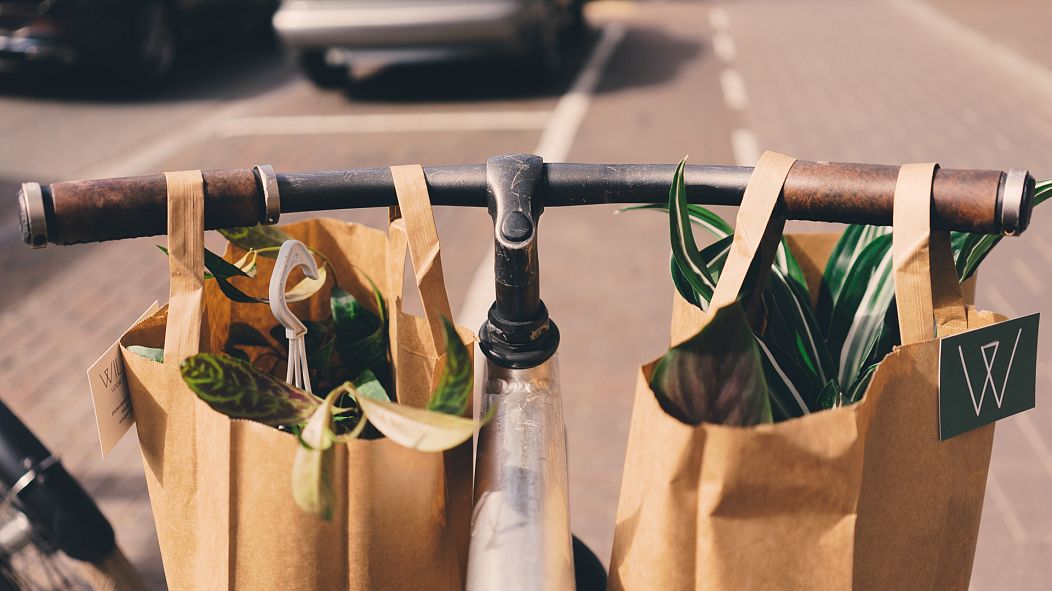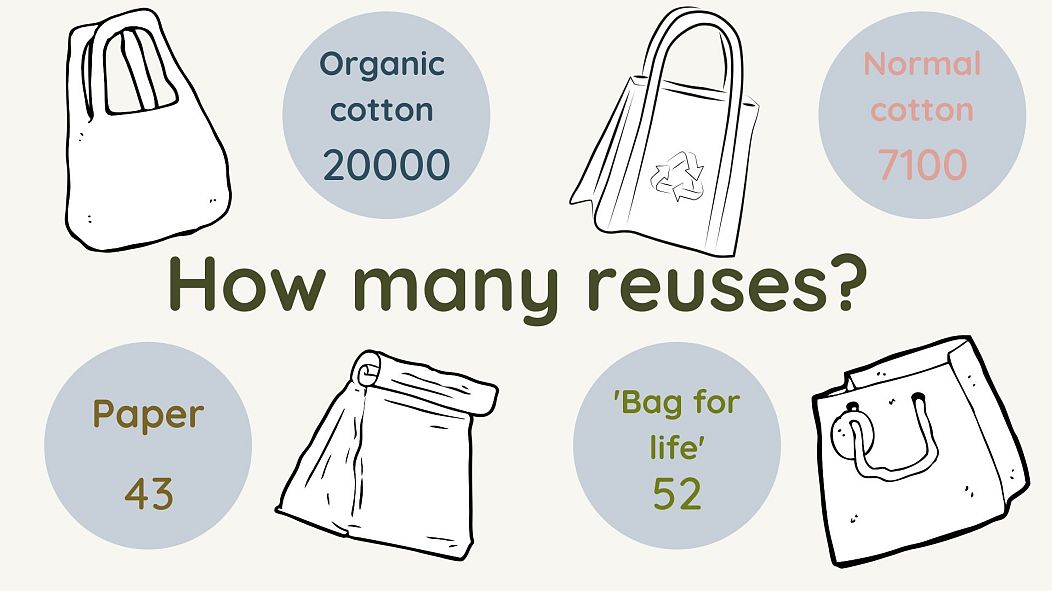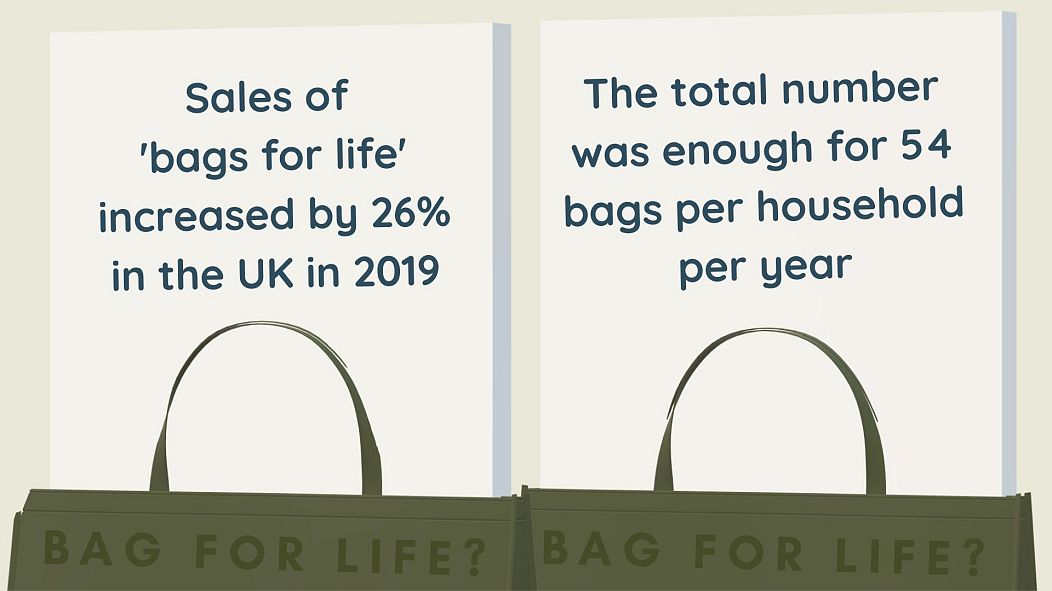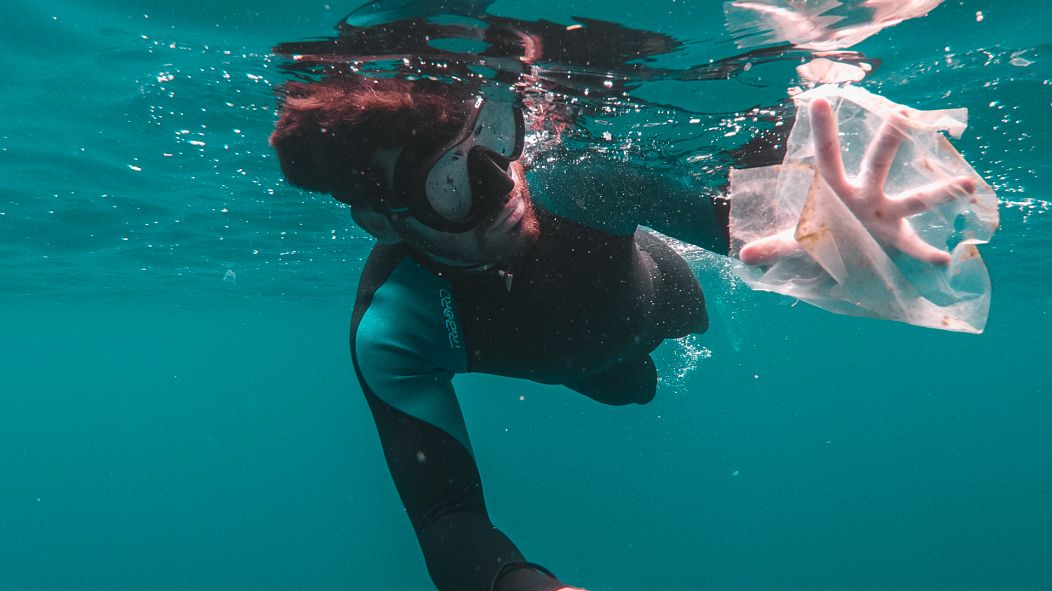Just how many times do you have to use a 'bag for life' to make it worth it.
Plastic bags have become a bit of a taboo subject in recent years. Bans have been brought in across the globe to try to limit how many of these environmentally disastrous pieces of junk end up littering our world for virtually forever. Even some of the most prolific waste producers are making plastic bags a thing of the past with China looking to ban non-biodegradable bags by the end of 2020.
Despite our new-found distaste for the single-use carrier, the Earth Policy Institute estimates that nearly a trillion plastic bags are still used worldwide each year. That works out at 2 million every minute. As they will never biodegrade, bags often make their way out of our rubbish and into the world, end up caught on trees or floating in the ocean to poison, choke and entangle animals. Even when they do break down, the tiny pieces, called microplastics, have been found in our food and drinking water supplies.
As we have become wise to the impact of this waste, there has been a shift toward more eco-friendly options to stop our weekly shop from contributing to swirling islands of plastic growing in our oceans. As supermarkets look to adopt all kinds of seemingly sustainable swaps from paper to reusable alternatives, research has shown that some of these options might not be so green after all.
Pitting plastic against paper
A Danish study from 2018 took a look at the environmental impact of different carrier bags throughout their lives, from harvesting the raw material to you putting your carrots and cauliflower in them at the supermarket checkout. Pitting traditional single-use plastics against alternatives like more heavy-duty “bags for life”, paper and cotton, the team used 15 categories of environmental impact to work out how many times a bag needed to be reused.
The study created a lot of controversial headlines for the claim that cotton tote needed to be used thousands of times to have the same impact on the environment as a single-use plastic bag. If you look a bit closer, however, it doesn’t really spell the end for this eco-warrior favourite. The reason for these very large figures wasn’t water usage or CO2 emissions but instead damage to the ozone layer; damage that was caused by gases used to help transport the fossil fuels powering the pumps that water the cotton plants.
It is an unfair generalisation, though, as not all cotton is produced in the way they describe. Any impact on the ozone layer could be easily mitigated by switching irrigation away from fossil fuels to more renewable sources. The Danish study reveals that if climate change alone is considered, the minimum number of re-uses goes down to 149. That’s just two trips to the shop a week for one and a half years, a far more achievable number.
A bigger problem than cotton could be our growing addiction to the reusable “bag for life”. The Environmental Investigation Agency (EIA) and Greenpeace found that the introduction of a charge in the UK in 2015 might actually have increased the amount of plastic we use thanks to these thicker and heavier bags. Despite an 83% reduction in the use of conventional carrier bags, people are still buying these heavy-duty replacements at a similar rate with 1.5 billion sold in the UK last year.
“No recycling system in the world could deal with the volumes of plastics currently being used in the world every day,” says EIA Ocean Campaigner, Juliet Phillips, “we need to address the problem and significantly clamp down on single-use plastics.” She explains that the 5-10p charge introduced in the UK was too low to stop customers from treating reusable bags as a throwaway item. “UK households are getting through 54 ‘bags for life’ each year suggesting that they are being used as a bag for a week,” Phillips says.
Marine pollution matters
There something major missing from the Danish study as well, the disastrous impact of plastic bags on marine life. So uncontrollable is their spread that in 2019, an American explorer breaking a world record for diving to the deepest part of our oceans, the Mariana Trench, found a plastic bag at a depth of nearly 11km. That means that plastic waste has made it to parts of our planet that humankind has even been to yet.
Although perhaps not as damaging to the environment in the way the Danish scientists measured, conventional plastic bags easily find their way into the sea where they can cause the death of marine animals. Several species of sea turtles are particularly fond of feasting on jellyfish and a floating plastic bag bears a striking and dangerous resemblance to their favourite food. A recent Greenpeace study in French Guiana stated that an estimated 50% of all sea turtles have ingested pieces of plastic, something that makes them far more likely to wash up dead on our beaches.
It isn’t just whole bags drifting with the ocean currents that cause problems, however. These single-use items may never biodegrade but when they eventually break down they become microplastics. At least 50,000 particles of microplastics make their way into our bodies each year says a study in the journal Environmental Science and Technology. Chemicals like flame retardants and antimicrobials can leech out of the tiny bits of plastic wreaking havoc on our endocrine systems.
“We need system change, not material change,” says Phillips, “all materials have an environmental footprint and switching to paper bags is a false solution to the pollution crisis.” It turns out that, instead of swapping to an apparently eco-friendly alternative that just shifts the problem elsewhere, it’s better to just stick with reusing the bags you’ve already got as many times as possible.






















